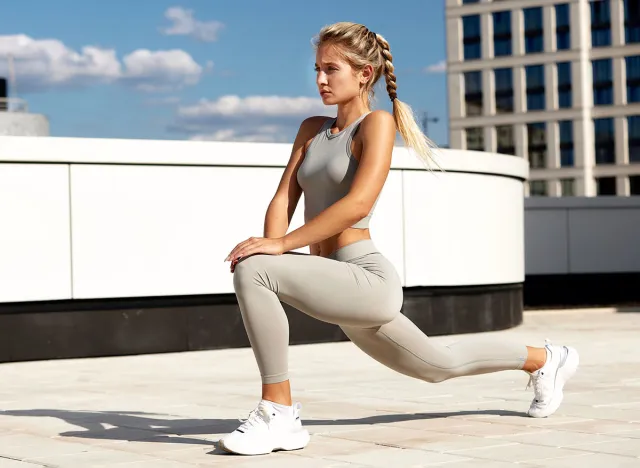If You Can Do This Many Lunges Without Stopping After 60, Your Leg Strength Is Exceptional

Crossing 60 doesn’t mean losing your edge, it means training smarter. Strength after this point isn’t about lifting the heaviest weights; it’s about maintaining control, balance, and endurance through movements that mimic real life. Lunges check all those boxes. They challenge your coordination, balance, and muscular stamina in one smooth, functional move that keeps your legs powerful and mobile.
The lunge builds strength you actually use every day, climbing stairs, standing from a chair, or stepping off a curb without wobbling. It trains your quads, glutes, and hamstrings to move in sync, while forcing your core to stabilize the body through motion. The ability to perform multiple lunges in a row without breaking form is more than a fitness milestone, it’s proof your lower body still performs like it did decades ago.
So how many lunges can you do before you need to rest? That number says more about your fitness and vitality than any scale or mirror ever could. Let’s find out where you stand, and what it takes to reach “exceptional” status.
How Many Lunges Should You Aim For
A strong benchmark for those over 60 sits around 20 to 25 lunges per leg without stopping. This count means you have the leg power, balance, and control that most people your age struggle to maintain. If you can hit 30 reps with perfect form and minimal rest, you’ve reached elite-level endurance. Anything beyond that shows not just strength but incredible lower-body resilience.
If you fall short, don’t stress, lunges are a skill as much as they’re an exercise. It takes time to build the muscular coordination and breathing rhythm needed to stay consistent. What matters most is progression. Each extra rep you earn adds years of functional strength to your life, keeping your steps steady and your body confident.
What Your Results Mean

Reaching 20 or more lunges per leg signals that your legs, glutes, and core still work as a cohesive unit. This balance of endurance and power translates directly to daily life: walking with ease, carrying groceries, and getting up from the floor without strain. You’ve built strength that doesn’t just show, it serves you in motion.
If your count is between 10 and 20, you’re on solid ground. That range reflects moderate lower-body fitness and a strong base to build from. Below 10 reps? It’s a wake-up call to strengthen your foundation. It means your legs fatigue too early, your stability may be slipping, and your coordination could use fine-tuning, all of which are reversible with consistent effort.
How To Improve Your Lunge Performance

Improving your lunge count isn’t just about doing more lunges. Start by slowing down each rep, control the descent, hold briefly at the bottom, and drive through the heel on your way up. That tempo strengthens stabilizing muscles and builds endurance without joint stress. Practice reverse lunges to reduce knee strain while improving control, and add side lunges for hip strength and mobility.
Consistency wins here. Aim for three sessions per week, performing three sets of 10–12 lunges per leg. Over time, increase your volume and shorten your rest. If you stay patient and precise, those 25 lunges per leg will come, and your legs will feel decades younger for it.